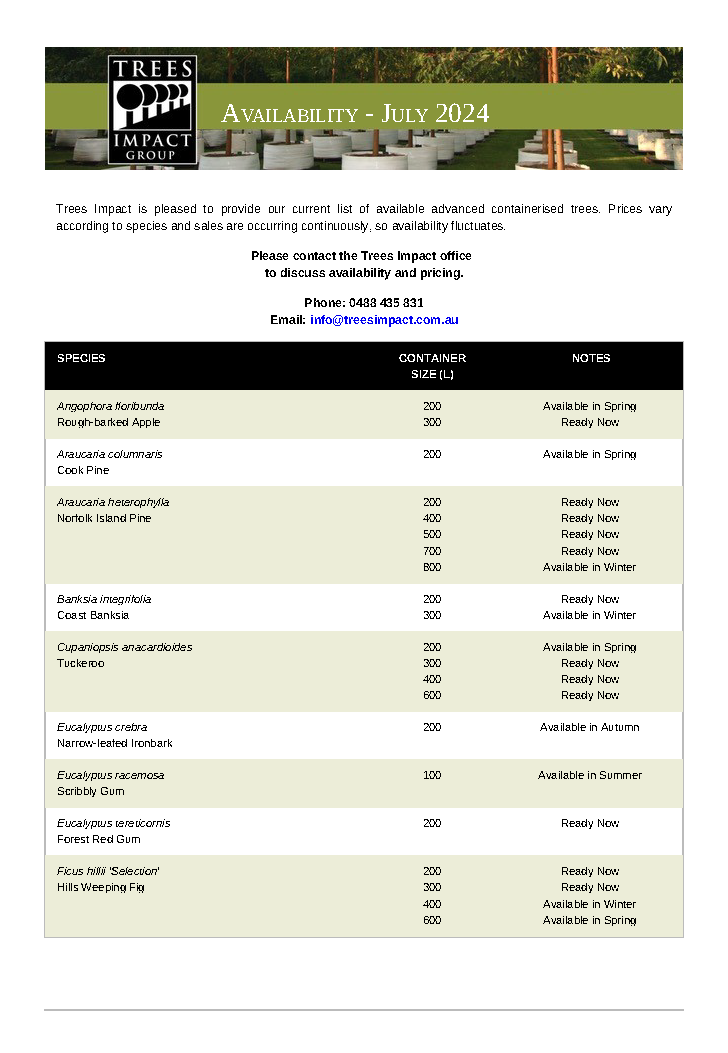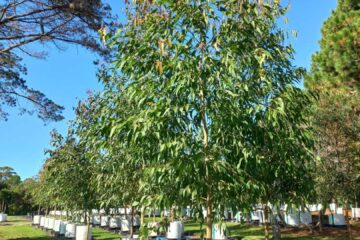Estimating Soil Volume Needs of Trees in Urban Situations
Urban soils are generally disturbed, often compacted, and the soil chemistry is commonly less than ideal – so it is often not much use to trees. However, in urban situations the amount of soil trees can access is critical to their long-term success. If existing soils are not suitable (or not available), we need to provide some that are.
So, how much soil do trees need?
A SIMPLE RULE OF THUMB
The formula below provides a quick and easy method of estimating required soil volume that is consistent with suggested volumes proposed elsewhere around the world.
It is based on:
- The “Balance Formula” found in the NATSPEC Specification for landscape trees; and
- The substantially identical “Balance Formula” in the new Australian Standard 2303:2015 (an evolution of NATSPEC); and uses
- A variation of Size Index sometimes called the “Field Size Index” (FSI) where FSI = Height (m) x Diameter at Breast Height (mm).
| Required soil volume (m3) = | Field Size Index 100 |
For example: Consider a tree with an estimated height at maturity of 10m and an estimated Diameter at Breast Height of 400mm.
Required soil volume (m3) = [10 x 400] -:- 100
Required soil volume = 40m3
Note: The volume generated is an estimate and should only be used to generate an order of magnitude as a guide or target volume.
RATIONALE
The logic behind this formula is as follows:
Various authors have investigated soil requirements for urban trees from different perspectives (e.g. Lindsay and Bassuk and James Urban) generally arriving at a recommendation which, when converted to metric, equates to 0.6 m3 of soil per m2 of crown projection.
This rule of thumb works well for trees of regular form. However, it is likely to overestimate required volumes for wide spreading species and underestimate volumes for upright species.
For trees of “regular” form, the soil volume estimates generated by calculating a volume equivalent to 0.6m deep under the crown projection, will be the same as that generated by our rule of thumb.
However, the formula above is not only far simpler, it also allows the calculation of appropriate soil volumes, consistent with those found in the literature, in a manner that automatically compensates for variations in form.
Note: To use the formula above, you will need to estimate mature height and DBH. Estimations of height are readily available on grower sites and on the internet. Estimates of DBH will be more difficult to obtain. In the absence of better information use the following approximations:
- 2.5% of estimated tree height for tall slender growing species;
- 4% of estimated tree height for general species; and
- 5.5% of estimated tree height for stockier / thick-stemmed species.
See our article on Calculating DBH for more information.

